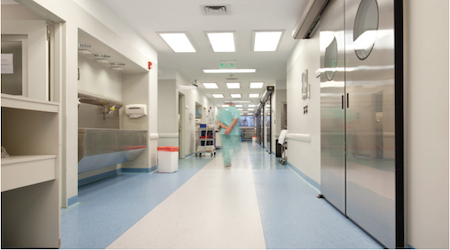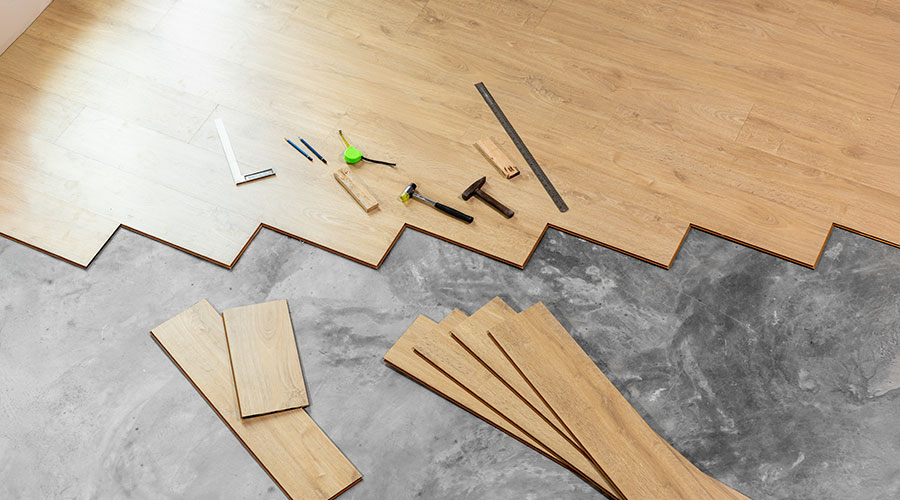4 Ways Flooring Taps into a Facility's Full Potential
Beyond looking good, flooring can have multiple benefits. Here's what you need to know.
A facility’s flooring is a hard-working asset, but it is packed with potential functionality beyond just providing something to stand on. Used as wayfinding, it helps direct traffic and prevents visitors from becoming lost. Flooring can also clearly guide building occupants to safe fire exits, provide branding opportunities, and in the time of COVID-19, assist with social distancing messaging, along with other purposes. Whether facility managers are preparing for a renovation, a new build, or a temporary solution, considering flooring’s multiple functions could provide long-term benefits to the facility.
The impact of floors
Flooring tops the list in hierarchy of importance for design elements in a space, says James Standing, a senior designer at Oculus Inc., who works mainly in healthcare settings. “It’s the first thing you come in contact with and healthcare providers are on their feet constantly. Having materials that support comfort underfoot and safety are critical.”
The direct contact between flooring and facility occupant is significant in any facility. “It’s the first physical element that a client or guest comes into contact with,” says Jaime Merrill, a senior designer at Oculus focused on hospitality. “Lighting can be very important, as well, but with flooring, you come into direct contact with it.” Flooring impacts noise levels, shows people where to go within a space, and more, she says.
“There’s really no other element of the interior that can do the same as flooring can,” says Elizabeth Von Lehe, design principal at HDR. She notes that because it’s very often costlier than many of the other design elements, using it for more than one purpose makes sense.
Flooring can support the organization’s needs in any facility in a variety of ways. These could include:
1. Space definition: A common way flooring can be used in all facility types is to help define a space. For example, hospitals tend to be confusing spaces with a hierarchy of space within the design. In these facilities, “visual cues highlight that hierarchy,” Von Lehe says. In a dorm, flooring can also help to containerize areas. For instance, different types of flooring map out an area for students to congregate for socializing versus study. In a hotel, the reception area can be set apart via the type of flooring used. Where that flooring starts and stops signifies to guests that they are arriving at or leaving the reception area.
2. Wayfinding: Flooring that also provides wayfinding elements is “low-hanging fruit,” and its effectiveness can’t be overstated, says Von Lehe. Signs can be everywhere but colored lines on the floor or visual reminders there provide visitors with an added sense of security. This is especially important in areas where seniors are likely to visit or live. “Aging eyes see things very differently than the younger eye does,” Von Lehe says.
3. Improve safety: Things most individuals see as part of the aesthetic can be confusing and even dangerous for older individuals. A very dark color on a wall or floor, for example, might resemble a hole to someone with dementia, says Von Lehe. Likewise, elderly people often struggle with colors that are of high contrast as well as darker colors. Reducing the risk of falls and other accidents is one benefit of thinking through the flooring and colors used in facility redesigns or builds.
4. Branding: The floor offers a large canvas to reinforce an organization’s branding. Luxury vinyl tile, for example, can easily have graphics cut into it, says Standing.
Related Topics:












